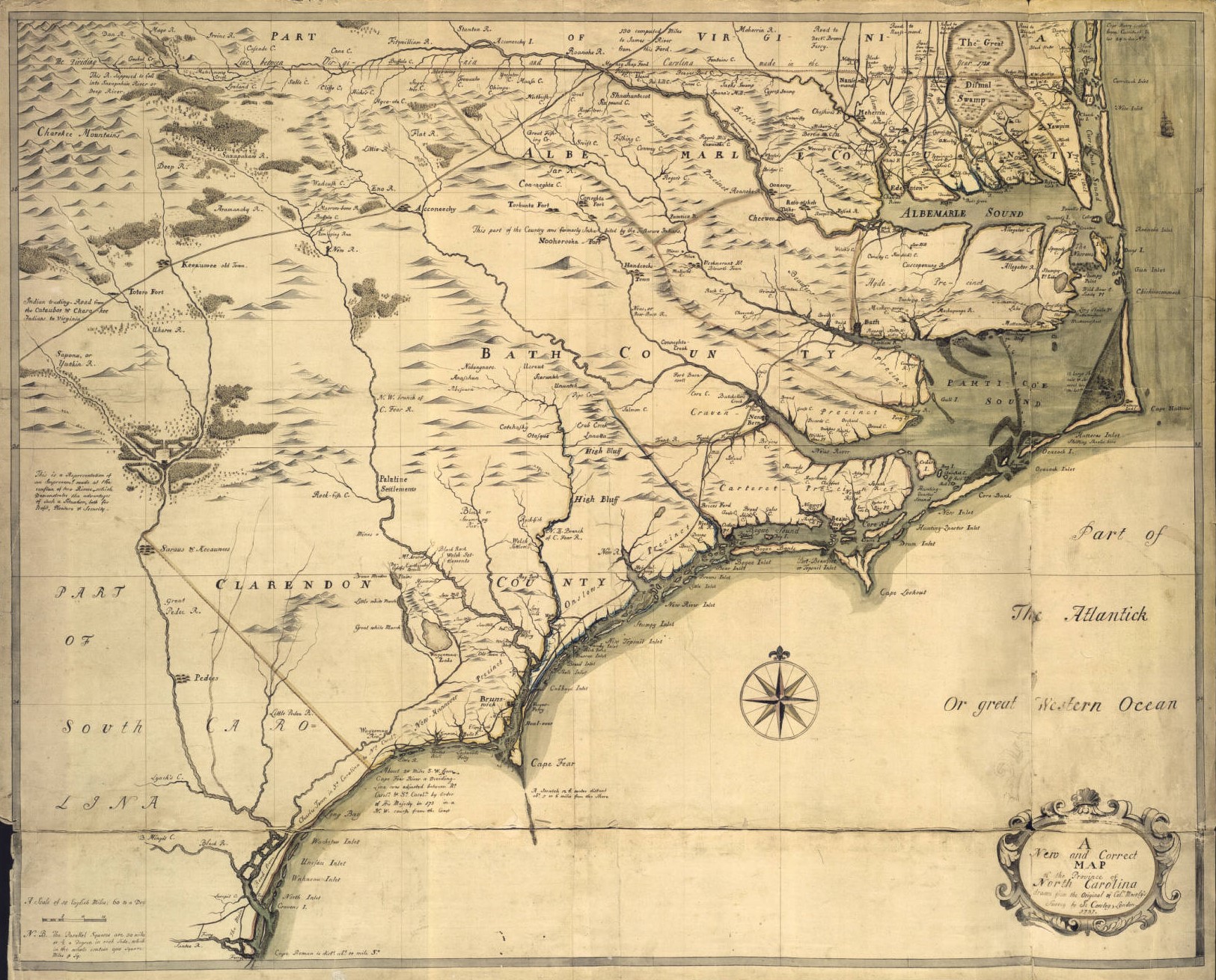ca. 1682–July 1749

Edward Moseley, colonial official, may have been the single most important political figure in the first half of the eighteenth century in North Carolina. He was a man of great and varied skills: politician, surveyor, book collector, vestryman, planter, and attorney. While several important families participated in North Carolina politics during Moseley's career—the Pollocks, Swanns, and Moores, for instance—none of them produced any single figure who could match Moseley's influence or durability.
Moseley apparently was born and educated in London. William Byrd says of him in The Secret History of the Dividing Line : "Plausible [Moseley] had been bred in Christ's Hospital and had a tongue as smooth as the Commissary, and was altogether as well qualified to be of the Society of Jesus." Of Moseley's early life little is known except that in December 1697, at age fifteen, he was apprenticed from Christ's Hospital (an orphanage) "in the Practice of Navigation" to serve on the ship Joseph under Jacob Foreland in the Bilbao trade. In May 1703 he was in Charles Town, S.C., cataloging books sent there by Thomas Bray of the Society for the Propagation of the Gospel in Foreign Parts. About a year later he immigrated to the Albemarle region of North Carolina and in 1705 made a "good match" by marrying Henderson Walker's widow, Ann. Settling in the northeastern portion of Chowan Precinct, Moseley began carving out a sizable place for himself in North Carolina politics and society.
An enumeration of Moseley's major offices in the colony is impressive. He was a justice of the peace and vestryman for Chowan in 1705; a member of the Proprietary Council during 1705–7, 1709–11, and 1723–24; speaker of the Assembly in 1708, 1722–23, and 1731–34 (he served as an assemblyman in virtually every session from 1708 to 1734, when he was not serving on the Council); a member of the royal Council from 1734 until his death; surveyor general in 1706; treasurer for the whole province from 1715 to 1735 and then for the southern district until his death; judge of vice admiralty in 1725; chief justice of the General Court from 1744 to 1745; and a member of the boundary commissions with Virginia in 1709 and 1728 and with South Carolina in 1737. In 1743 he was named baron of the Exchequer.
As speaker of the Assembly in 1708, he engineered the seating of delegates favorable to Thomas Cary in his struggle with William Glover for control of the governorship. Despite his Anglican connections, Moseley remained a supporter of Cary throughout the rebellion that took his name. Indeed, in 1713 Thomas Pollock wrote that Moseley "was the chief contriver and carry-er on of Col. Cary's rebellion." Throughout his career Moseley was frequently in conflict with certain factions in the colony, particularly those associated with long-settled families like the Pollocks. Late in 1718 he combined with Colonel Maurice Moore in an effort to discredit Governor Charles Eden and his associate Tobias Knight because of their relations with Edward Teach, the notorious Blackbeard. Moseley and Moore guided the overland expedition under Ellis Brand of Virginia to Bath County in an effort to trap Teach ashore. In December 1718 they broke into the house of Secretary John Lovick in an attempt to examine Council records for incriminating evidence against Eden and Knight. When Moseley and Moore were tried the following year, the event was a sensation. Moseley was fined and barred from public office for three years, but both Eden and Knight suffered irreparable damage to their political reputations.
Significantly, Moseley moved from Chowan to Rocky Point on the northeastern branch of the Cape Fear in 1735. He had taken as his second wife (on the death of his first) Ann Sampson, the stepdaughter of James Hasell, who had ties to that region. Moseley was also clearly attracted by the rapid development that had begun in the Lower Cape Fear late in the 1720s. Finally, in November 1734 he had accepted elevation to the royal Council and thus resigned his long leadership of the lower house. As a master tactician, Moseley knew that his voice would carry more weight for the Lower Cape Fear in the Council than it could in the Albemarle-dominated Assembly.
Moseley was soon embroiled in conflicts in the Council. He sided with the Moores against Governor Gabriel Johnston in the battle for supremacy between Newton (later Wilmington) and Brunswick town as ports of entry on the Lower Cape Fear. Apart from his past association with Maurice Moore, Moseley had been angered during 1735 by the governor's criticism of his part in the blank patent controversy under Governor Sir Richard Everard. Throughout his career as a royal councillor, Moseley consistently supported measures he believed to be favorable to growth in the Lower Cape Fear.
Few accounts of Moseley permit us a glimpse of his character. Despite the generally unfavorable portrait of him by William Byrd in the Secret History, Byrd readily concedes that Moseley was the man to whom the North Carolina commissioners looked for leadership as well as the man whom the Virginians had to persuade when any substantive conflict arose. Interestingly, while Byrd refers to the other North Carolina commissioners as Judge Jumble, Shoebrush, and Puzzlecause, he calls Moseley, Plausible. Attesting to Moseley's skill as a surveyor is the magnificent map of North Carolina published in 1733 that bears his name.
Moseley's association with books in North Carolina long remained a part of his life. In 1723 he donated seventy-six volumes (primarily theological works and church history) to Edenton to serve as the basis of a public library. At his death, his personal library exceeded four hundred volumes. He died possessing plantations in Chowan, Edgecombe, New Hanover, and other counties with a total acreage of over thirty thousand. He also enslaved at least ninety people. Moseley was survived by his wife, five sons, and a daughter.